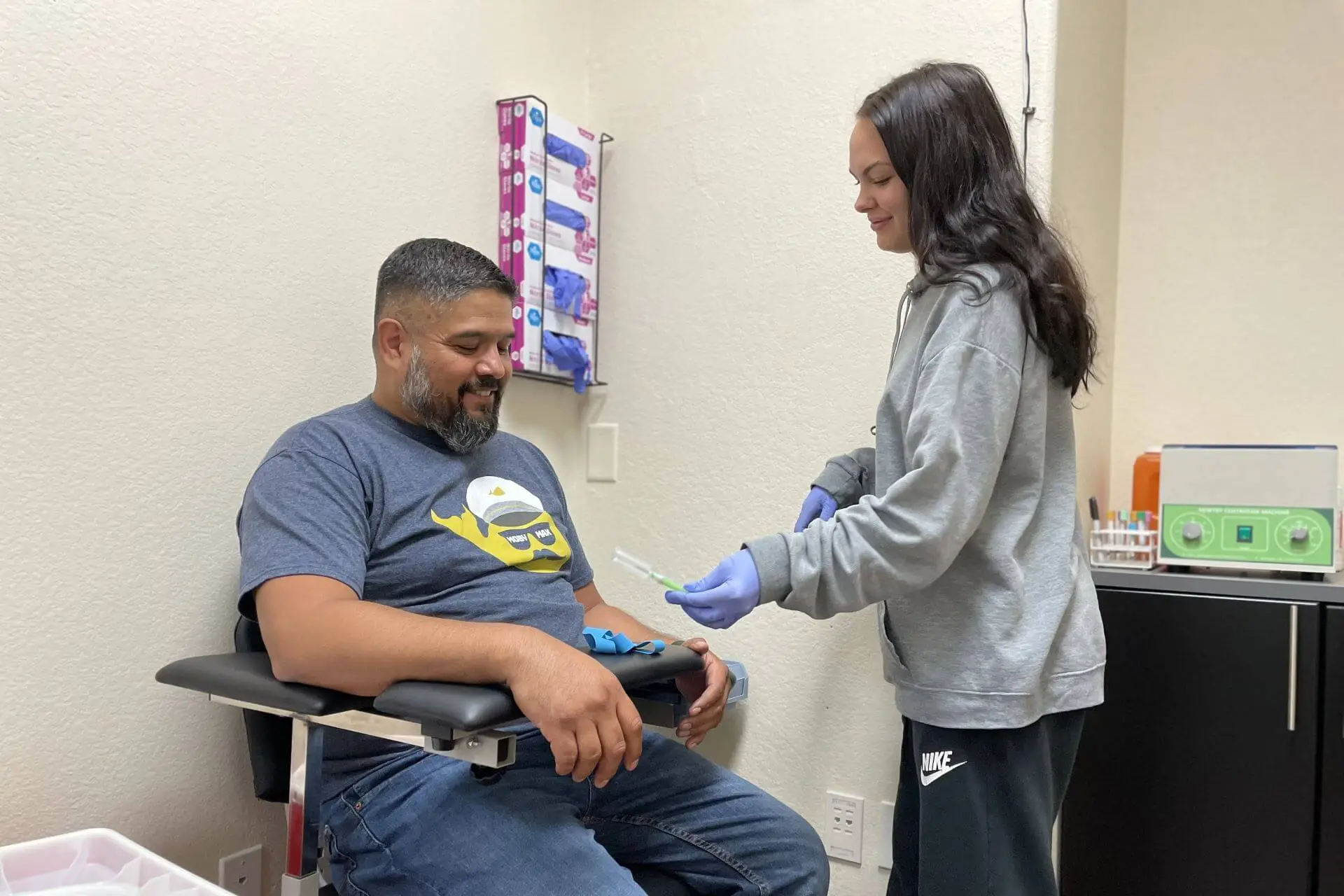If you’re wondering, “Where can I get a job as a phlebotomist?”, here’s the good news: you have more options than nearly any other profession in the United States.
Phlebotomy job opportunities are expected to grow 8% over the next 10 years, according to the US Bureau of Labor Statistics.¹
Certified phlebotomists are in high demand. That means you have the power to choose the job that fits your personality and needs.
For example, here are six different healthcare settings where certified phlebotomists can work:
- Assisted living facilities
- Diagnostic laboratories
- Hospitals
- Doctor’s offices
- Urgent care centers
- Blood donation centers
(Go on Google and search for your number one pick. You’ll find a potential employer or even multiple employers within three miles of where you live, guaranteed.)
An aging population means more opportunities.
The US has an aging population, and that’s only going to continue. By 2040, it’s expected that there will be 80 million Americans aged 65 or older.²
As our demographics continue to shift, demand for diagnostic blood tests will continue to increase and the need for phlebotomists will continue to increase, too.
Phlebotomists can work wherever blood is drawn.
Healthcare facilities like hospitals, clinics, and blood donation centers have been and continue to be consistent employers of phlebotomists.
Now, you can also expect nursing homes, assisted living facilities, and diagnostic labs to offer more job opportunities.
For phlebotomists, the environment matters.
No matter where you work, a phlebotomist’s job will be largely the same: collecting blood from patients and preparing the samples for testing.
Your role will change depending on where you work.
Phlebotomists may have a broader range of responsibilities in smaller settings like clinics and physician offices, such as administrative tasks or assisting with other medical procedures.
But in a hospital, you’ll likely handle a higher volume of patients and collaborate with a larger team.
You can get a job as a phlebotomist.
The requirements will differ slightly depending on your state. But no matter where you are, there are three basic steps you can take to get a job as a phlebotomist.
- Complete a phlebotomy training program.
- Get your phlebotomy certification.
- Prepare a resume and cover letter.
Before you send in your resume, get feedback from family, friends, and mentors. If you know a business owner, doctor, nurse, or clinician, ask them to review your resume and point out any areas that might need improvement. You need to stand out, so try to be as clear and concise as possible, and don’t be afraid to talk yourself up.
NTX Training Institute can prepare you for a job in phlebotomy.
If you’re wondering how to get a job as a phlebotomist, the journey can seem overwhelming. The NTX Training Institute makes the process simple.
In addition to offering a seven-week phlebotomy course with one-on-one training, we provide students the opportunity to take the National Healthcareer Association (NHA) Certified Phlebotomy Technician (CPT) exam on the last day of class in an environment that you know.
Have more questions? Give us a call or contact us by email.
You can get a job as a phlebotomist.
The requirements will differ slightly depending on your state. But no matter where you are, there are three basic steps you can take to get a job as a phlebotomist.
- Complete a phlebotomy training program.
- Get your phlebotomy certification.
- Prepare a resume and cover letter.
Before you send in your resume, get feedback from family, friends, and mentors. If you know a business owner, doctor, nurse, or clinician, ask them to review your resume and point out any areas that might need improvement. You need to stand out, so try to be as clear and concise as possible, and don’t be afraid to talk yourself up.
NTX Training Institute can prepare you for a job in phlebotomy.
If you’re wondering how to get a job as a phlebotomist, the journey can seem overwhelming. The NTX Training Institute makes the process simple.
In addition to offering a seven-week phlebotomy course with one-on-one training, we provide students the opportunity to take the National Healthcareer Association (NHA) Certified Phlebotomy Technician (CPT) exam on the last day of class in an environment that you know.
Have more questions? Give us a call or contact us by email.
References:
- Occupational Outlook Handbook — Phlebotomists. [Internet]. US Bureau of Labor Statistics. 2023. Available from: https://www.bls.gov/ooh/healthcare/phlebotomists.htm
- Gabriel, B. By 2040, one in five Americans will be over age 65 [Internet]. AARP. 2018. Available from: https://www.aarp.org/politics-society/history/info-2018/older-population-increase-new-report.html


